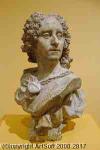Noel Nicolas Coypel
Noël Coypel;Noël Coypel I;Noel Nicolas Coypel;Noel Coypel;Noel Coypel I
- Nghệ sĩ
- Tất cả các tác phẩm nghệ thuật theo thời gian
- Tất cả các tác phẩm nghệ thuật bằng Alphabet
- Tác phẩm nghệ thuật nổi bật
Địa điểm: Paris
Sinh ra: 1628
Cái chết: 1707
Tiểu sử:
Noël Nicolas Coypel, also known as Coypel le Poussin, was a renowned French painter born on December 25, 1628, in Paris. He was the son of an unsuccessful artist and was heavily influenced by Nicolas Poussin. Coypel's artistic journey began when he was employed by Charles Errard to paint some of the pictures required for the Louvre.
Early Life and Training
Coypel's early life and training played a significant role in shaping his artistic style. He was born into a family of artists, and his father, although unsuccessful, instilled in him a passion for painting. Coypel's fascination with Poussin's works led him to study the master's techniques, which would later become a defining characteristic of his own style.
Artistic Career
Coypel's artistic career was marked by several notable achievements. He gained considerable fame for painting some of the pictures required for the Louvre. In 1672, he was appointed director of the French Academy at Rome, a position he held for four years. After his return to France, Coypel became the director of the Academy of Painting, where he continued to hone his craft.
- Coypel's most notable work is perhaps The Martyrdom of St James in Nôtre Dame, which showcases his mastery of classical themes and techniques.
- He was a pupil of Noël Quillerier, who further influenced his artistic style.
- Coypel's sons, Antoine and Noël-Nicolas, were also painters, following in their father's footsteps.
Legacy and Impact
Coypel's legacy extends beyond his own works. He was a prominent figure in the French art scene, and his influence can be seen in the works of many other artists. His style, characterized by elegance and classical themes, has been studied and emulated by art enthusiasts and professionals alike. To learn more about Coypel's life and works, visit https://Wikioo.org/@/Noel-Nicolas-Coypel, where you can find an extensive collection of his paintings, including The Martyrdom of St James and other notable works. You can also explore the Musée des Beaux-Arts de Carcassonne, which features a wide range of Western paintings from the 17th to the 20th century, including works by Coypel and other renowned artists. In conclusion, Noël Nicolas Coypel was a talented French painter who left an indelible mark on the art world. His legacy continues to inspire artists and art enthusiasts alike, and his works remain a testament to his elegance and mastery of classical themes.
Wikipedia link: Click Here














